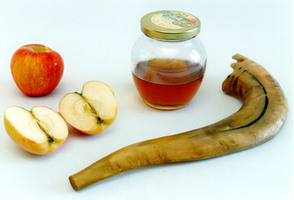
Rosh Hashanah
Rosh Hashanah is observed on the 1st of Tishrei.
In Hebrew, Rosh Hashanah means, literally, “Head of the Year,” and as its name indicates, it is the beginning of the Jewish year. The anniversary of the creation of Adam and Eve, it is the birthday of mankind, highlighting the special relationship between God and humanity.
The primary theme of the day is our acceptance of God as our King The primary theme of the day is our acceptance of G d as our King. The Kabbalists teach that the renewal of God’s desire for the world, and thus the continued existence of the universe, is dependent upon this. We accept God as our King, and God is aroused, once again, with the desire to continue creating the world for one more year.
The central observance of Rosh Hashanah is the sounding of the shofar, the ram’s horn. The sounding of the shofar represents, among other things, the trumpet blast of a people’s coronation of their king. The cry of the shofar is also a call to repentance.
We eat a piece of apple dipped in honey to symbolize our desire for a sweet year, as well as many other special foods. All have special significance and symbolize sweetness, blessings, and abundance. We bless one another with the words Leshanah tovah tikateiv veteichateim, “May you be inscribed and sealed for a good year.”
We leave our old shortcomings behind us, thus starting the New Year with a clean slate. We go to a lake, river or to the sea and recite the Tashlich prayers, where we symbolically cast our sins into the water.
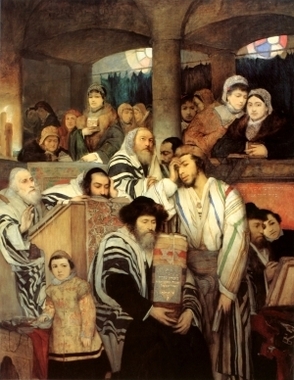
Yom Kippur
Yom Kippur 9th Tishrei.
Yom Kippur commemorates the day that God forgave the Jewish people for the sin of the Golden Calf. Forty days after hearing God say at Mount Sinai: “You shall not have the gods of others in My presence; you shall not make for yourself a graven image,” the Jews committed the cardinal sin of idolatry. Moses spent nearly three months on top of the mountain pleading with God for forgiveness, and on the tenth of Tishrei it was finally granted: “I have pardoned, as you have requested.”
From that moment on, this date, henceforth known as the Day of Atonement, is annually observed as a commemoration of our special relationship with God, a relationship that is strong enough to survive any rocky bumps it might encounter. This is a day when we connect with the very essence of our being, which remains faithful to God regardless of our outward behavior.
And while it is the most solemn day of the year, we are also joyful, confident that God will forgive our sins and seal our verdict for a year of life, health, and happiness.
For nearly twenty-six hours – from several minutes before sunset on Tishrei 9 until after nightfall on Tishrei 10 – we “afflict our souls”: we abstain from food and drink, do not wear leather footwear, and abstain from spousal intimacy. We are likened to the angels, who have no physical needs. Instead of focusing on the physical, we spend much of our day in the synagogue, engaged in repentance and prayer.
In the course of Yom Kippur we will hold six prayer services: 1) Maariv, with its solemn Kol Nidrei service, on the eve of Yom Kippur; 2) Shacharit—the morning prayer; 3) Musaf, which includes a detailed account of the Yom Kippur Temple service; 4) Minchah, which includes the reading of the Book of Jonah. 5) Yizkor service, In the Yizkor prayer, we beseech G d to kindly remember the souls of our dear departed ones.
Finally, in the waning hours of the day, we reach the climax of the day: the sixth prayer, the Neilah (“locking”) prayer. The gates of Heaven, which were open all day, will now be closed—with us on the inside. During this prayer we have the ability to access the most essential level of our soul. The Holy Ark remains open throughout. The closing Neilah service climaxes in the resounding cries of “Hear O Israel… God is one.” This is followed by a single blast of the shofar, and the proclamation, “Next year in Jerusalem.”
After the fast we partake of a festive after-fast meal, making the evening after Yom Kippur a Yom Tov (festival) in its own right. We immediately begin to look forward to the next holiday and its special mitzvah: the construction of the sukkah
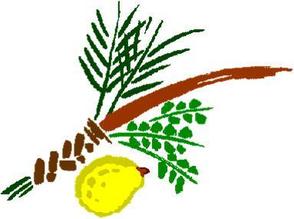
Sukkot
Sukkot runs from the fifteenth through the twenty-first of Tishrei.
For forty years, as our ancestors traversed the Sinai Desert prior to their entry into the Holy Land, miraculous “clouds of glory” surrounded and hovered over them, shielding them from the dangers and discomforts of the desert. Ever since, we remember God’s kindness and reaffirm our trust in His providence by dwelling in a sukkah – a hut of temporary construction with a roof covering of branches – for the duration of the autumn Sukkot festival. For seven days and nights, we eat all our meals in the sukkah – reciting a special blessing – and otherwise regard it as our home.
Another mitzvah that is unique to Sukkot is the taking of the Four Kinds: an etrog (citron), a lulav (palm frond), three hadassim (myrtle branches) and two aravot (willow branches).
On each day of the festival (except Shabbat), during the daytime hours, we take the Four Kinds, recite a blessing over them, bring them together in our hands and wave them in all six directions: right, left, forward, up, down and backward. (The Four Kinds are also an integral part of the holiday’s daily morning service.)
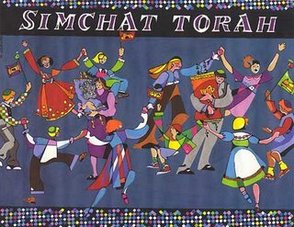
Simchat Torah
Simchat Torah and Shemini Atzeret.
Simchat Torah and Shemini Atzeret 22nd Tishri are one day. In Israel, where Simchat Torah is not celebrated on a separate day – since all Festivals are observed for a single day, the customs of Simchat Torah are observed together with those of Shemini Atzeret. This practice is observed by Liberal congregations.
Simchat Torah comes on the last day of the festivities. At this time the last portion of the Torah is read, and since we never finish the Torah reading, we begin the reading from the very beginning again to show the Torah is beloved to us like a “new command to which everyone runs”. This is a very happy occasion. All the Torah scrolls are taken from the Ark and carried in a parade around the synagogue seven times. We rejoice, sing and dance with the Torahs, for the reestablishment of our covenant with the Torah as a groom rejoices with his bride.
If a man is called to read the last few lines of Deuteronomy, he is called the Chatan Torah (groom of the Torah) and if a woman is called up, she is called the Kallah Torah (bride of the Torah). Likewise, the male readers of the beginning of Genesis are referred to as the Chatan Bereshit (groom of creation) and female readers are referred to as the Kallah Bereshit (bride of creation).
The last passages of Deuteronomy chronicle the death of Moses. In some way, Simchat Torah honours Moses’ death, but the day also clearly ties the death to the first chapter of Genesis: the Creation of the universe. In this way, Simchat Torah also reminds people that life transcends death and that the world is a never ending cycle of death and rebirth.
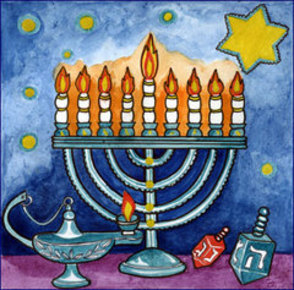
Chanukkah
Hanukkah, the Festival of Lights, is celebrated for eight days, commencing on the 25th day of the month of Kislev (November/December), to commemorate the victory of our ancestors over the Hellenist Syrians in 165 BCE.
Following their victory, the Maccabees, sons of the Priestly Hasmonean family which led the revolt against the Syrian overlords, entered the Holy Temple in Jerusalem. They found that it had been defiled by the Syrian invaders; it was cleansed and rededicated to the service of God. Then, in memory of their victory, the Maccabees celebrated the first Chanukkah. (Hanukkah is the Hebrew term for dedication).
The Talmud, the body of Jewish oral law, relates how the Judean heroes, led by Judah Maccabee, were making ready to rededicate the Temple and were unable to find enough undefiled oil to light the lamps. However, in one of the Temple chambers, they finally came upon a small cruse of oil which, under normal circumstances, would have lasted only one evening. Miraculously, this small amount of oil kept the Temple lights burning, not for one night, but for all the eight nights until new oil fit for use in the temple could be obtained. This is the miracle commemorated by the kindling of the Hanukkah lights.

Tu B’Shevat
Tu B’Shevat, the 15th of Shevat on the Jewish calendar -is the day that marks the beginning of a “New Year for Trees.” This is the season in which the earliest-blooming trees in the Land of Israel emerge from their winter sleep and begin a new fruit-bearing cycle.
We mark the day of Tu B’Shevat by eating fruit, particularly from those singled out by the Torah in its praise of the bounty of eretz Yisrael : grapes, figs, pomegranates, olives and dates. On this day we remember that “Man is a tree of the field” (Deuteronomy 20:19)
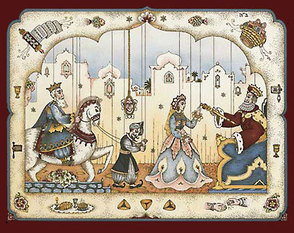
Purim
The festival of Purim is celebrated every year on the 14th of the Hebrew month of Adar, preceded by the fast of Easter 13th of Adar, (late winter/early spring). It commemorates the salvation of the Jewish people in Ancient Persia from Haman’s plot “to destroy, kill and annihilate all the Jews, young and old, infants and women, in a single day.” Traditional food is hamantaschen.
The story in a nutshell:
The Persian empire of the 4th century BCE extended over 127 lands, and all the Jews were its subjects. When King Ahasuerus had his wife, Queen Vashti, executed for failing to follow his orders, he orchestrated a beauty pageant to find a new queen. A Jewish girl, Esther, found favour in his eyes and became the new queen—though she refused to divulge the identity of her nationality.
Meanwhile, the anti-Semitic Haman was appointed prime minister of the empire. Mordechai, the leader of the Jews (and Esther’s cousin) defied the king’s orders and refused to bow to Haman. Haman was incensed and convinced the king to issue a decree ordering the extermination of all the Jews on the 13th of Adar (The Fast of Easter)—a date chosen by a lottery Haman made.
Mordechai galvanized all the Jews, convincing them to repent, fast and pray. Meanwhile, Esther asked the king and Haman to join her for a feast. At the feast, Esther revealed to the king her Jewish identity. Haman was hanged, Mordechai was appointed prime minister in his stead, and a new decree was issued—granting the Jews the right to defend themselves against their enemies.
On the 13th of Adar the Jews mobilized and killed many of their enemies. On the 14th of Adar they rested and celebrated.
The book of Esther is the only book of the Bible that does not contain the name of God. In fact, it includes virtually no reference to God.
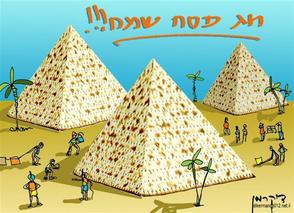
Pesach
The eight-day festival of Passover is celebrated in the early spring, from the 15th through the 22nd of the Hebrew month of Nissan. It commemorates the emancipation of the Israelites from slavery in ancient Egypt. And, by following the rituals of Passover, we have the ability to relive and experience the true freedom that our ancestors gained.
Story in a Nutshell
After many decades of slavery to the Egyptian Pharaohs, during which time the Israelites were subjected to backbreaking labour and unbearable horrors, God saw the people’s distress and sent Moses to Pharaoh with a message: “Send forth My people, so that they may serve Me.” But despite numerous warnings, Pharaoh refused to heed G d’s command. God then sent upon Egypt ten devastating plagues, afflicting them and destroying everything from their livestock to their crops.
At the stroke of midnight of Nissan 15 of the year 2448 from creation (1313 BCE), G d visited the last of the ten plagues on the Egyptians, killing all their firstborn. While doing so, God spared the Children of Israel, “passing over” their homes—hence the name of the holiday. Pharaoh’s resistance was broken, and he virtually chased his former slaves out of the land. The Israelites left in such a hurry, in fact, that the bread they baked as provisions for the way did not have time to rise. 600,000 adult males, plus many more woman and children, left Egypt on that day, and began the trek to Mount Sinai and their birth as God’s chosen people.
To commemorate the unleavened bread that the Israelites ate when they left Egypt, we don’t eat or even retain in our possession any “chametz” from midday of the day before Passover until the conclusion of the holiday. Chametz means leavened grain—any food or drink that contains even a trace of wheat, barley, rye, oats, spelt or their derivatives and wasn’t guarded from leavening or fermentation. This includes bread, cake, cookies, cereal, pasta, and most alcoholic beverages. Moreover, almost any processed food or drink can be assumed to be chametz unless certified otherwise.
Instead of chametz, we eat matzah— flat unleavened bread. It is a mitzvah to partake of matzah on the two Seder nights (see below for more on this), and during the rest of the holiday it is optional. Just refrain from eating chametz.
The highlight of Passover is the two “Seders,” observed on the first two nights of the holiday. The focal points of the Seder are:
- Eating matzah.
- Eating bitter herbs—to commemorate the bitter slavery endured by the Israelites.
- Drinking four cups of wine or grape juice—a royal drink to celebrate our newfound freedom.
- The recitation of the Haggadah, a liturgy that describes in detail the story of the Exodus from Egypt.
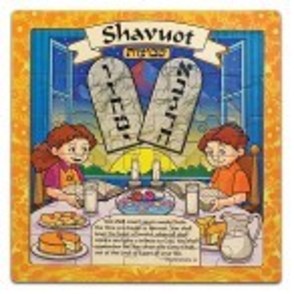
Shavuot
The Torah was given by God to the Jewish people on Mount Sinai more than 3300 years ago. Every year on the holiday of Shavuot we renew our acceptance of God’s gift and God “re-gives” the Torah. The holiday of Shavuot is a two-day holiday, beginning at sundown of the 5th of Sivan and lasting until nightfall of the 7th of Sivan.
It is customary to eat dairy food on Shavuot. Everything from cheese blintzes to lasagna to cheesecake makes this festival a delight for dairy lovers! The word Shavuot means “weeks.” It marks the completion of the seven week counting period between Passover and Shavuot.
The giving of the Torah was a far-reaching spiritual event—one that touched the essence of the Jewish soul for all times. Our Sages have compared it to a wedding between God and the Jewish people. Shavuot also means oath and on this day God swore eternal devotion to us, and we in turn pledged everlasting loyalty to Him.
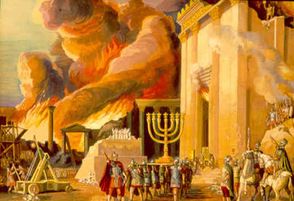
Tisha B’Av
The 9th of Av, Tisha b’Av, commemorates a list of catastrophes so severe it’s clearly a day specially cursed by God.
Key observances of the day include reading the Book of Lamentations, which describes the aftermath of the destruction of the First Temple and the reading of dirges which describe massacres of Jews including during the Crusades, the Spanish Inquisition and the Chmielnicki pogroms. Modern additions have been made to include the Holocaust.
Picture this: The year is 1313 BCE. The Israelites are in the desert, recently having experienced the miraculous Exodus, and are now poised to enter the Promised Land. But first they dispatch a reconnaissance mission to assist in formulating a prudent battle strategy. The spies return on the eighth day of Av and report that the land is unconquerable. That night, the 9th of Av, the people cry. They insist that they’d rather go back to Egypt than be slaughtered by the Canaanites. God is highly displeased by this public demonstration of distrust in His power, and consequently that generation of Israelites never enters the Holy Land. Only their children have that privilege, after wandering in the desert for another 38 years.
The First Temple was also destroyed on the 9th of Av (423 BCE). Five centuries later (in 69 CE), as the Romans drew closer to the Second Temple, ready to torch it, the Jews were shocked to realize that their Second Temple was destroyed the same day as the first.
When the Jews rebelled against Roman rule, they believed that their leader, Simon bar Kochba, would fulfil their messianic longings. But their hopes were cruelly dashed in 133 CE as the Jewish rebels were brutally butchered in the final battle at Betar. The date of the massacre? Of course—the 9th of Av!
One year after their conquest of Betar, the Romans ploughed over the Temple Mount, our nation’s holiest site.
The Jews were expelled from England in 1290 CE on, you guessed it, Tisha b’Av. In 1492, the Golden Age of Spain came to a close when Queen Isabella and her husband Ferdinand ordered that the Jews be banished from the land. The edict of expulsion was signed on March 31, 1492, and the Jews were given exactly four months to put their affairs in order and leave the country. The Hebrew date on which no Jew was allowed any longer to remain in the land where he had enjoyed welcome and prosperity? Oh, by now you know it—the 9th of Av.
The Jews were expelled from England in 1290 CE on, you guessed it, Tisha b’Av. Ready for just one more? World War II and the Holocaust, historians conclude, was actually the long drawn-out conclusion of World War I that began in 1914. And yes, amazingly enough, the First World War also began, on the Hebrew calendar, on the 9th of Av, Tisha b’Av.
What do you make of all this? Jews see this as another confirmation of the deeply held conviction that history isn’t haphazard; events – even terrible ones – are part of a Divine plan and have spiritual meaning. The message of time is that everything has a rational purpose, even though we don’t understand it.
